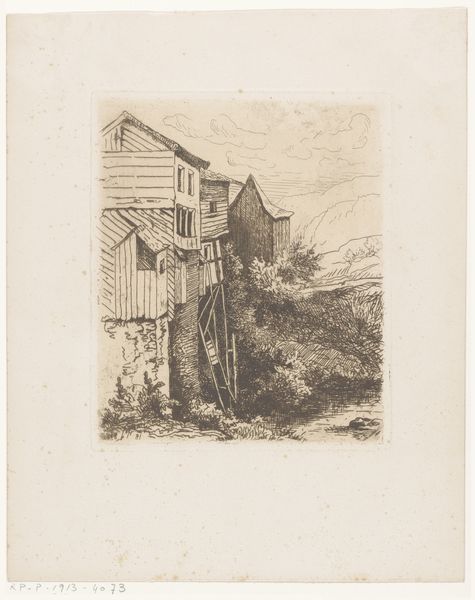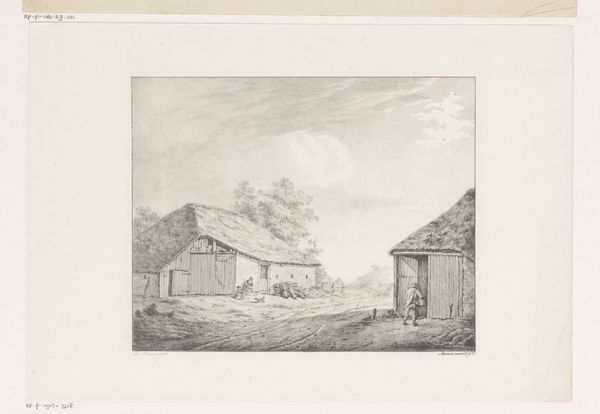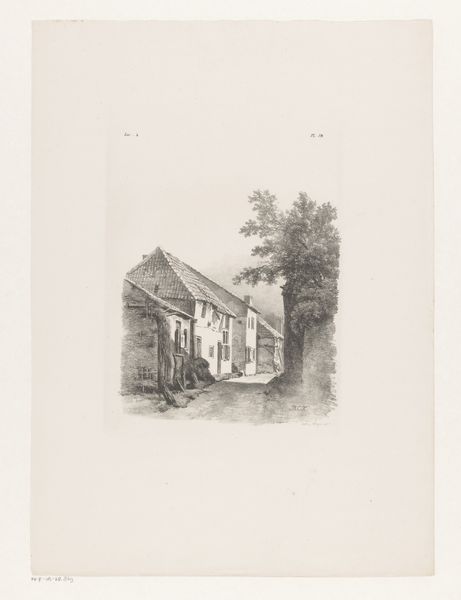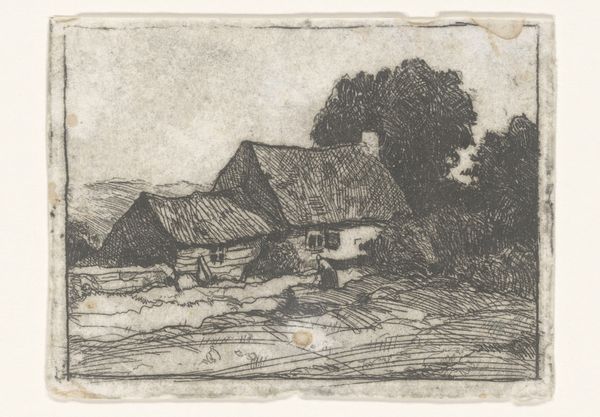
print, etching
# print
#
etching
#
landscape
#
etching
#
genre-painting
#
realism
Dimensions: height 220 mm, width 160 mm
Copyright: Rijks Museum: Open Domain
Curator: This is "Heuvelachtig landschap met boerenhofstede," or "Hilly landscape with a farmstead," an etching made by Louise Danse in 1887. It's part of the Rijksmuseum collection. Editor: There's a melancholic feel to it, don't you think? The textures feel aged, worn by time and weather. Note how the artist employs only etching; there are not color variations, so it highlights pure form and composition. Curator: I agree about the melancholic quality. Rural scenes like this gained popularity as cities industrialized. Images idealized simpler ways of life as antidotes to rapid societal change and, moreover, the economic forces displacing them. Danse, as a female artist, occupied a space distinct from her male contemporaries portraying landscapes, usually reflecting bourgeoise values. Editor: The lines really define everything, a meticulous process of the artist who, even so, renders all the imperfections and ruggedness of buildings. Do you find her vision aligned to photographic realism? Or, is this romanticization evident even in what appears, at first sight, like an objective reproduction? Curator: Both, perhaps? While Danse meticulously observes architectural detail, her artistic choices seem very much informed by broader artistic trends, the Barbizon school especially. These choices would have reflected her audience: one educated enough to read nuances while yearning nostalgically for disappearing landscapes in Belgium. I think we’re able to examine not only representation, but artistic identity itself through it. Editor: True. The cross-hatching builds density that lends form to shapes and space while reinforcing its rustic character. How can we better translate how class structures influence landscape representations and the viewer engagement at the time? Curator: The etching itself is significant here; it was a medium accessible to wider audiences, democratizing access to art unlike, say, oil paintings commissioned for wealthy patrons only. Danse exhibited extensively; therefore, her work became actively part of visual culture. This makes each choice even more significant in shaping and reflecting collective aspirations during this period of transition. Editor: I concur; viewing this not only as a representation but a participant in social discourse indeed deepens the meaning of form and structure in itself. We cannot examine formal elements outside a critical understanding of their participation in the political and economic discourses of its time.
Comments
No comments
Be the first to comment and join the conversation on the ultimate creative platform.













